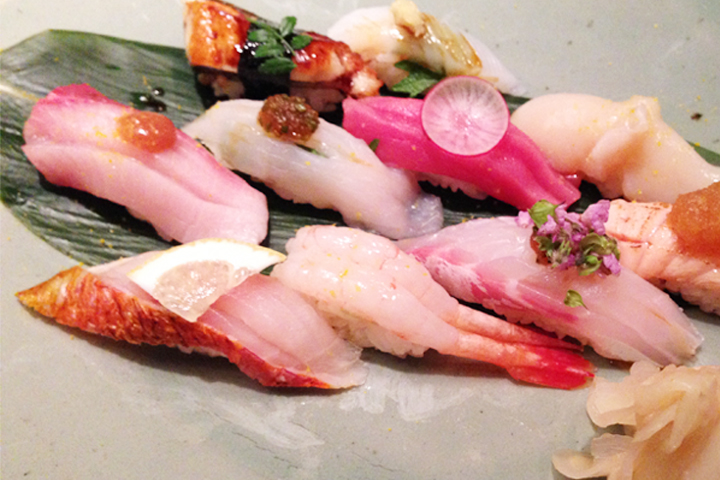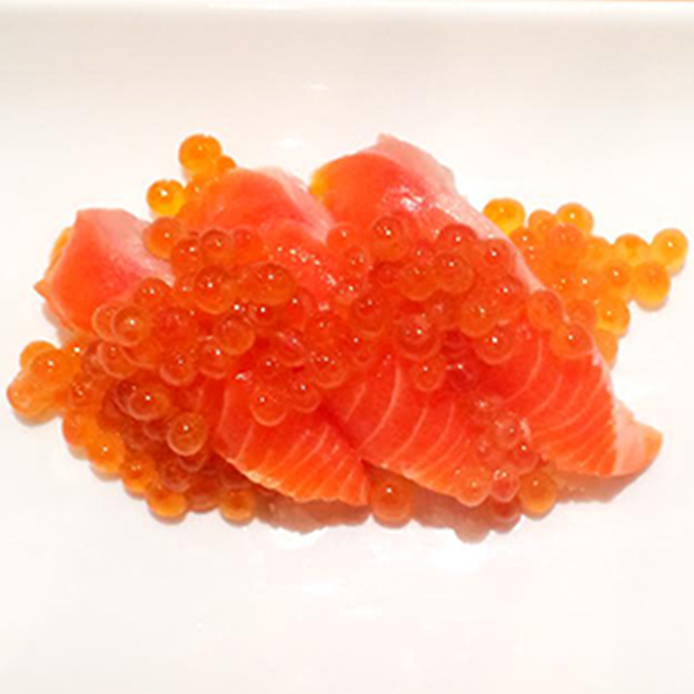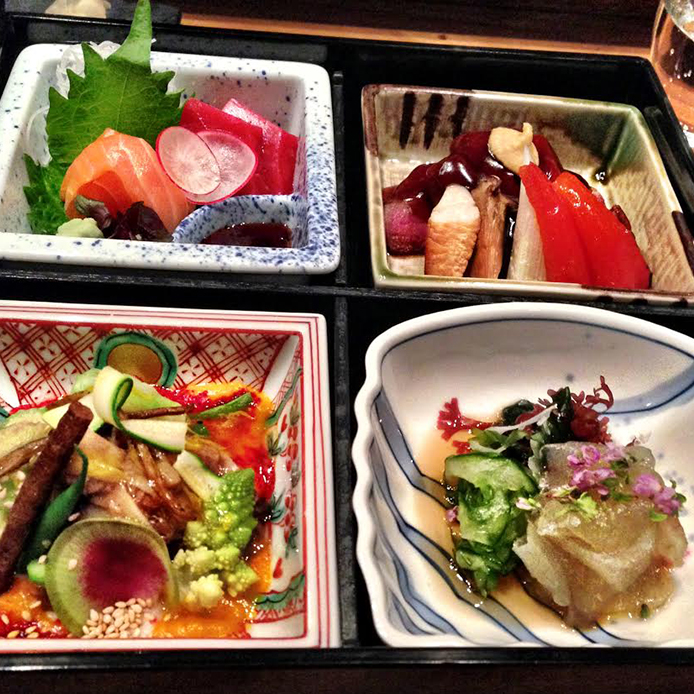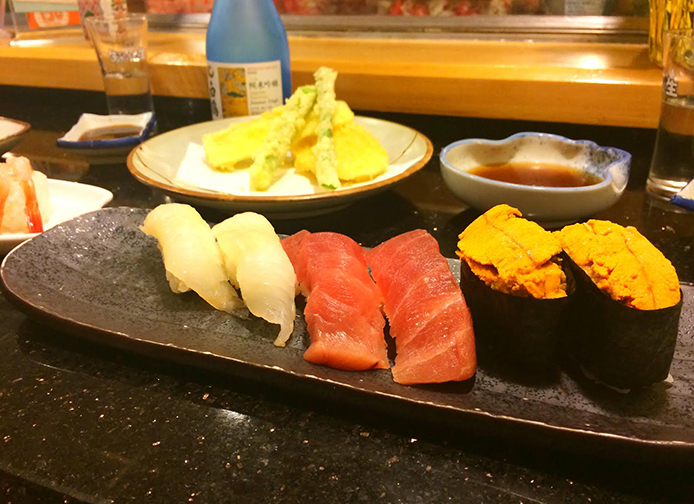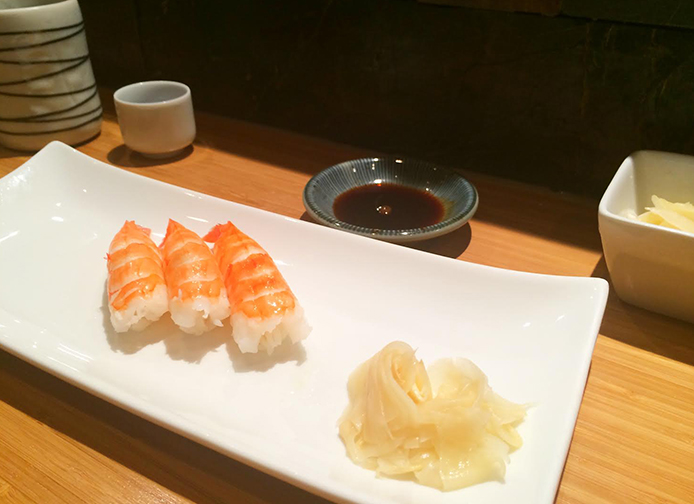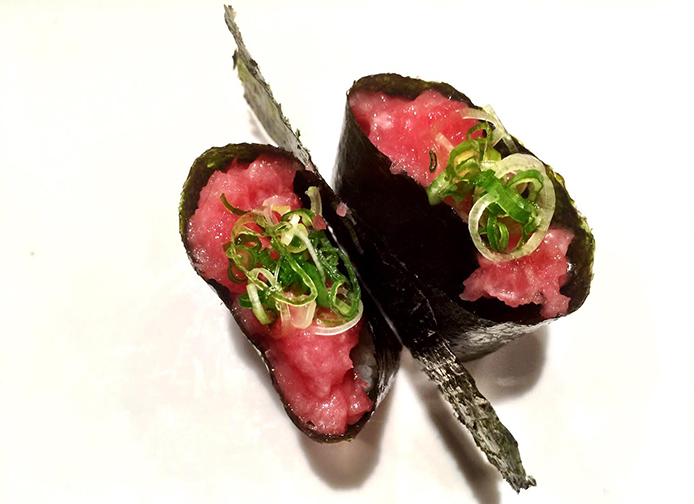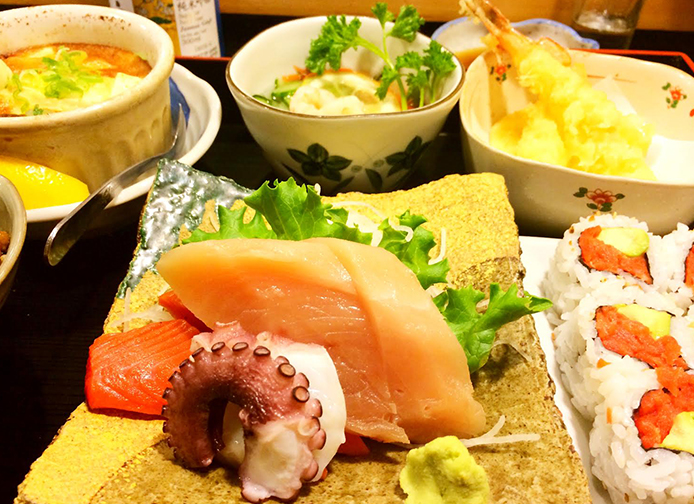I had always been a particular eater – rolling paper napkins to make dividers on my dinner plate (a phase which nearly drove my mom mad), shunning breakfast (with the exception of egg whites scrambled into oblivion), loving gelatinous Vienna sausages in their odd sized tin, and loathing anything that was sweet and warm (hot chocolate & warm apple pie never made it to my hit list). And yet sushi – seemingly odd to most children, was a food group that always ranked high for my peculiar palate. When I was six years old my mom started packing cucumber rolls in my lunchbox. By ten I had graduated to California rolls, the chewy imitation crab meat never plussing my delicate food sensibilities. I would have dinner with my parents at Noma, a quiet Japanese restaurant in Santa Monica, where we would tuck into our usual booth. They separated when I was three years old, but we continued to have these meals – the ritual of which, with both my parents in tow – was a treasure. My dad with his frosty glass of plum wine, my mom dipping her shrimp tempura into the requisite tea colored sauce, and my small mouth filled with sticky sushi rice, briny shoyu tickling my lips, and a broad toothy smile spread across my freckled face. I equated sushi with happiness. I still do.
As an adult, my tastes have broadened – reveling in the specifically beautiful texture of uni so much so that I went hand diving for them in the Caribbean to taste it fresh from the sea. These days I opt to sit at the sushi bar, ordering Omakase, and willing myself to whatever the sushi chef wants me to eat – to relinquish control and take a culinary adventure in the knowing hands of a chef who has studied the delicate art of sushi. It’s a beautiful thing. It’s a happy thing.
My favorite spots for sushi are: Sushi Park (Los Angeles), Umu (London), Kaji and Yasu (both in Toronto), and my holy grail for sushi – Sushi Yasuda (New York). Here are some customs from my friends at Yasuda to fully enhance your sushi experience. And no, I have not had the good fortune to visit Japan yet, but unlike heated pie, that is very high on my list.
Shoyu, Wasabi and Gari
Shoyu (soy sauce), ground wasabi (mountain-grown Japanese horseradish) and gari (pickled ginger, sharp and slightly sweet) are intended to be used in moderation. More than a touch of shoyu, for example, upsets the delicate balance of tastes. Also, avoid mixing the wasabi in the shoyu — allow the distinct flavors of the fish, rice and condiments to “meet each other” rather than blend. If you like, eat a small piece of gari to refresh your palate for the next kind of fish. Use the gari sparingly and do not put it on your sushi or sashimi, as it will wipe out the flavors of the rice and fish.
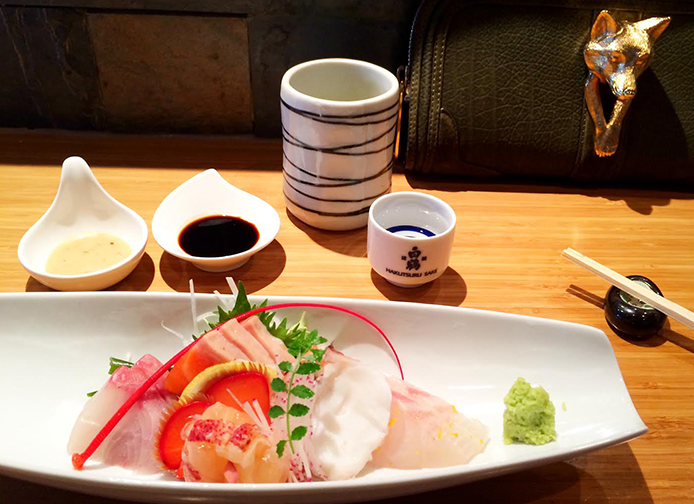
Sashimi
Traditionally, a sushi meal consists primarily of sushi (fish with rice). However, you may start with sashimi (fish without rice) to awaken your mouth to the pure flavors of the fish.
Begin your meal by cleaning your hands with the warm, moist oshibori (hand cloth). Pour a small amount of shoyu into your shoyu dish. If you like, take a little bit of wasabi between the tips of your chopsticks, and then pick up a single slice of fish. Dip only the edge of your sashimi into the shoyu and place the entire slice in your mouth to eat.
Between bites of sashimi, enjoy a bit of seaweed or tsuma (paper-thin ribbons of daikon—white radish). The daikon provides a refreshing, subtle peppery note.
Sushi
When you are ready for a more rounded-out and classic taste, move on to sushi. For cleaning your fingers while eating sushi, a yubifuki (a finger-cloth made of sarashi—fine Japanese bleached cotton) will be provided.
Carefully pick up each piece of sushi with a finger and thumb (chopsticks are fine if you prefer) and place the entire piece in your mouth to eat. Place the rice side on your tongue for the best intersection of flavors, textures and aromas.
A delicate topping, such as a sheer coating of Yasuda’s special shoyu, is usually applied by the sushi chef. Therefore it is best to eat the sushi “straight” without adding extra shoyu.
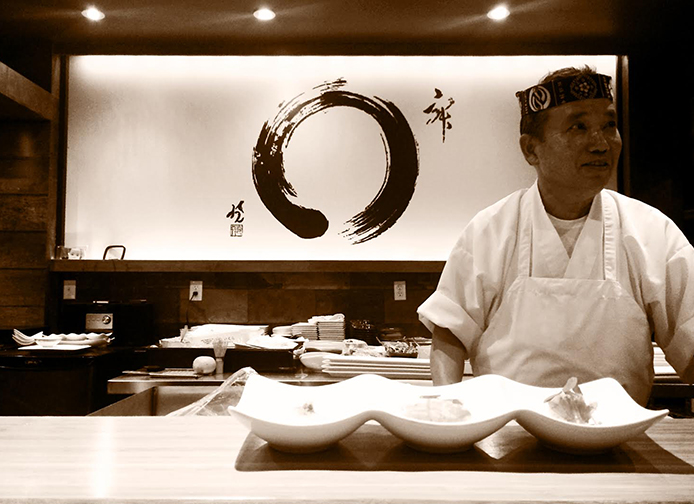
Maki
Fish and rice rolled in nori (a thin sheet of dried seaweed, handmade in Japan exclusively for Yasuda) — will sometimes arrive without shoyu. You can dip the edge of the makiinto the shoyu, applying a small amount as an accent.
Since wasabi is applied to the rice, it is usually not necessary to add more. However, if you want extra, pick up some wasabi with your fingers or chopsticks, and add it to the top of the fish.

